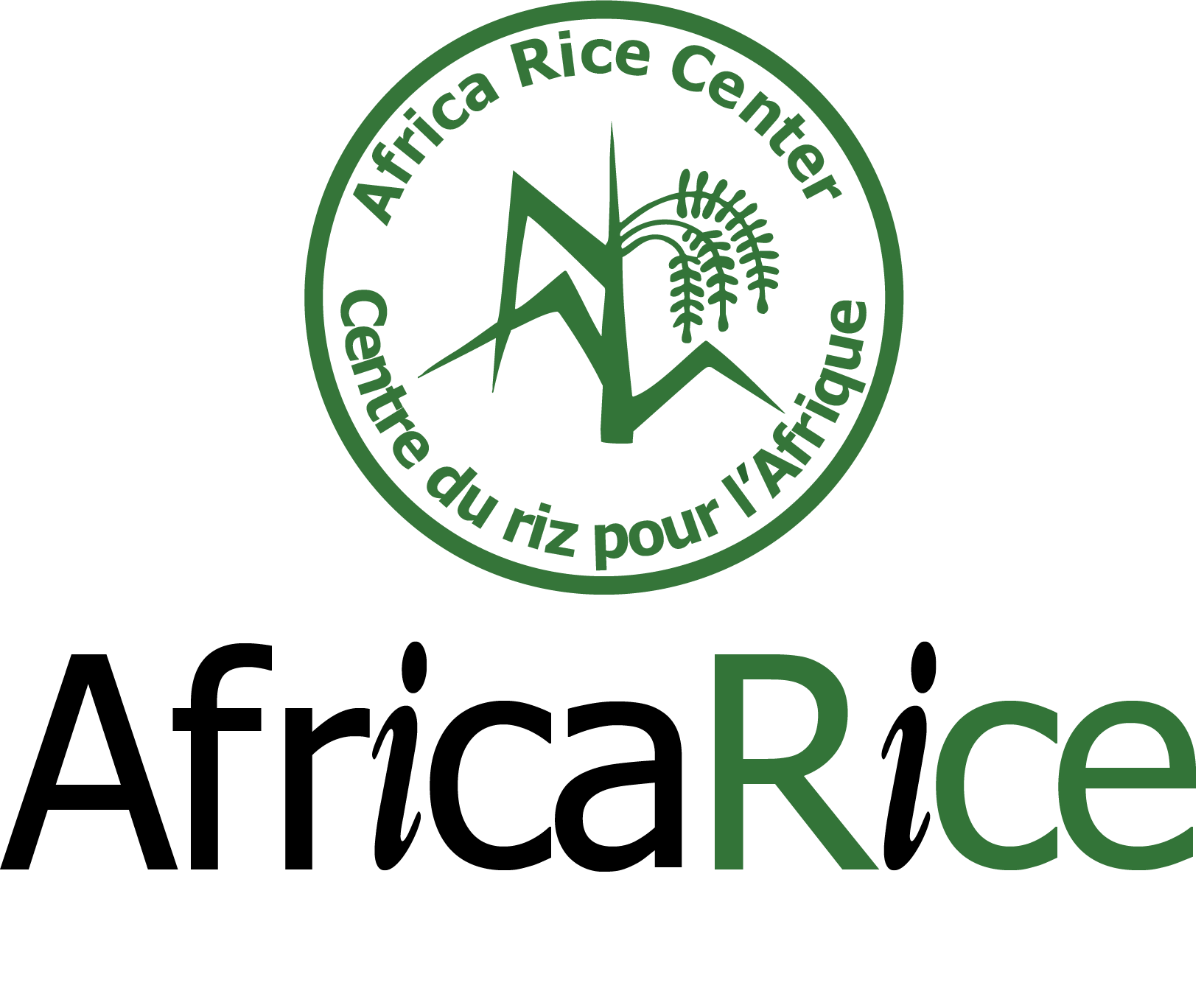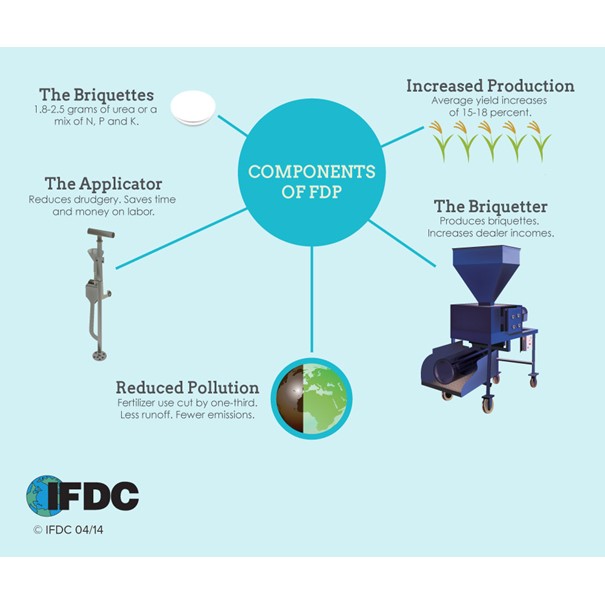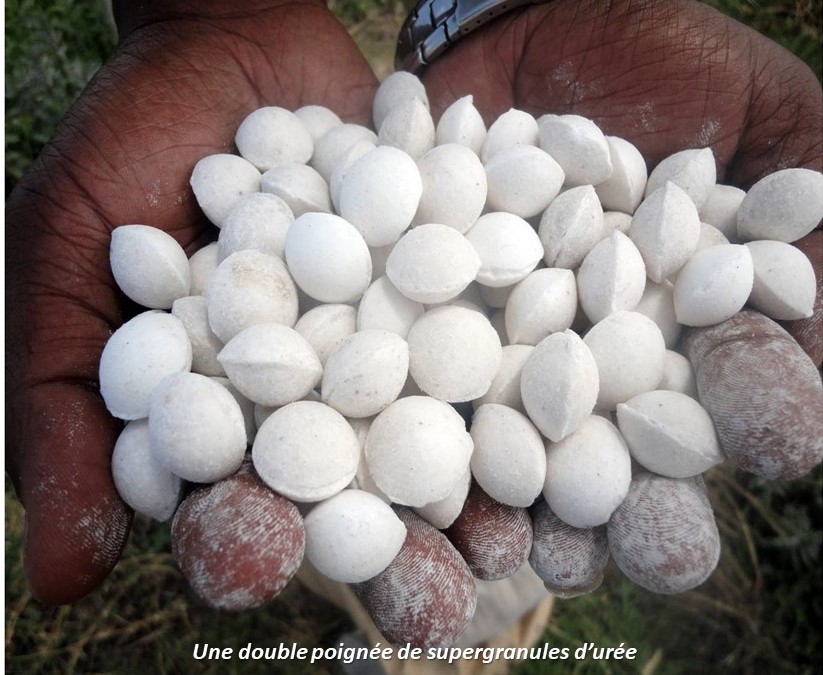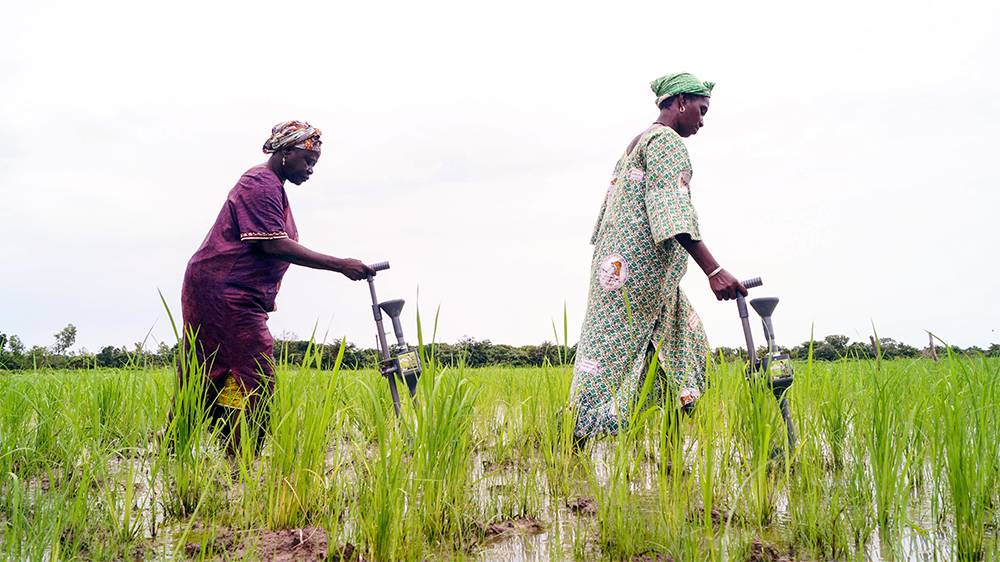Deep urea placement (nitrogen management)
Summary
Nitrogen (N) application rates to rice paddies by input of urea fertilizer in Sub-Saharan Africa are generally low, and very often the uptake of nitrogen from this synthetic source by rice crops is limited because of losses to air and groundwater. Better management of N fertilization by farmers in rice production offers a lot of room for enhancing grain productivity, agronomic efficiency and profits margins, as well as reducing the spill-over of N to the environment. Deep placement of urea in paddies involves drilling large-sized granules or briquettes of the fertilizer into soils that enable it to slowly release N into the root zone of rice crops. This method of fertilizer application drastically improves the delivery of N to rice crop, which boosts soil fertility and crop nutrient uptake, and enables farmers to get higher yields and quality of rice grain with lower rates of input. Scaling programs for deep urea placement by rice farmers have shown to be highly effective for intensifying the crop’s production, and give rise to considerable savings in production costs and additional incomes along the value chains, and ultimately reduced food insecurity and importations of the staple food.
About the Solution
Rice farmers in Sub-Saharan Africa usually broadcast urea fertilizer and then plough it into soil at shallow depth before seedlings are transplanted, followed by one or two applications of urea by top dressings onto paddies when crops are tasseling and grain filling. Under this traditional way of applying fertilizer the rice plants take up only 25% to 40% of the applied N while the remainder is lost through drainage of water from paddies and leaching into groundwater that pollute rivers, lakes and oceans, alongside with greenhouse gas emissions, i.e., ammonia and nitrogen-oxides, that disturb local and global weather patterns. Deep placement of urea makes use of large granules and briquettes that release N slowly into soils, and spot-applying these in pockets of soil close to where rice seedling are planted, usually drilled down fertilizer to a depth of 7 - 14 centimeter. This technology can ensure a steady supply of nitrogen to rice crops with just one application per growing season as opposed to the two or three fertilizer applications that are required when placing fertilizer at shallow depth and on the surface. Rice crops have been shown to take up 70 - 90% of N from urea fertilizers when deep placement methods are used, and also strengthens the drought resilience of farming systems because fertilizers are less affected in the subsoil.
Deep point placement of urea fertilizer is appropriate for subsistence and commercial rice farmers in major production zones of Sub-Saharan Africa, and has been shown to perform best in lowland rice paddies with high soil clay and silt content that are particularly subject to surface water runoff. The improved method of fertilizer application is benefiting rice production when rainfall conditions are normal, and when drier or wetter than usual, which drastically alleviates climate-related risks of farmers in Sub-Saharan Africa that have limited or no access to irrigation. Suitability mapping showed that deep urea placement has a high potential to increase yields and nitrogen use efficiency on more than 46,000 hectare of rice paddies in Ghana (39% of growing area), and more than 21,000 hectare in Senegal (23% of growing area).
Large granules, prills and briquettes of urea, diammonium phosphate or other fertilizers that weigh 1 to 3 gram each are used for deep placement methods that have been designed to release N slowly through their size, hardness and/or use of binding and coating agents. Many fertilizer manufacturers and agro-input dealers in Sub-Saharan Africa already have urea products in their range that can be used for deep placement, and specialty briquettes are increasingly being marketed across rice-producing countries. A variety of mechanized tools for drilling fertilizers deep into soils has been developed and sold internationally, which allow to significantly reduce labor time associated with the spot application method.
For deep placement methods, urea supergranules or briquettes are usually drilled into soils between every four rice plants planted in line during or shortly after transplanting to get the optimal benefit on N uptake and grain production. Urea fertilizer has to be placed at the right position from the root zones of rice, which requires the crop to be sown in carefully spaced lines. Farmers best use manually operated and tractor-driven drillers that are purpose-built for this improved fertilizer application since it allows to get consistent placement and speed up the work a lot on paddy fields. High performing variety of rice and best agronomic practices should be followed along with the deep urea placement method to ensure maximal benefits in the short and long term.
Commercialization
Commercially available
Solution Images
Institutions

Accompanying Solutions
Improved rice varieties for Africa (NERICA and ARICA lines), Foliar micronutrient addition, Engineered irrigation surfacing (and water lifting), Motorized weeders (cut and bury paddy weeds), RiceAdvice digital support



